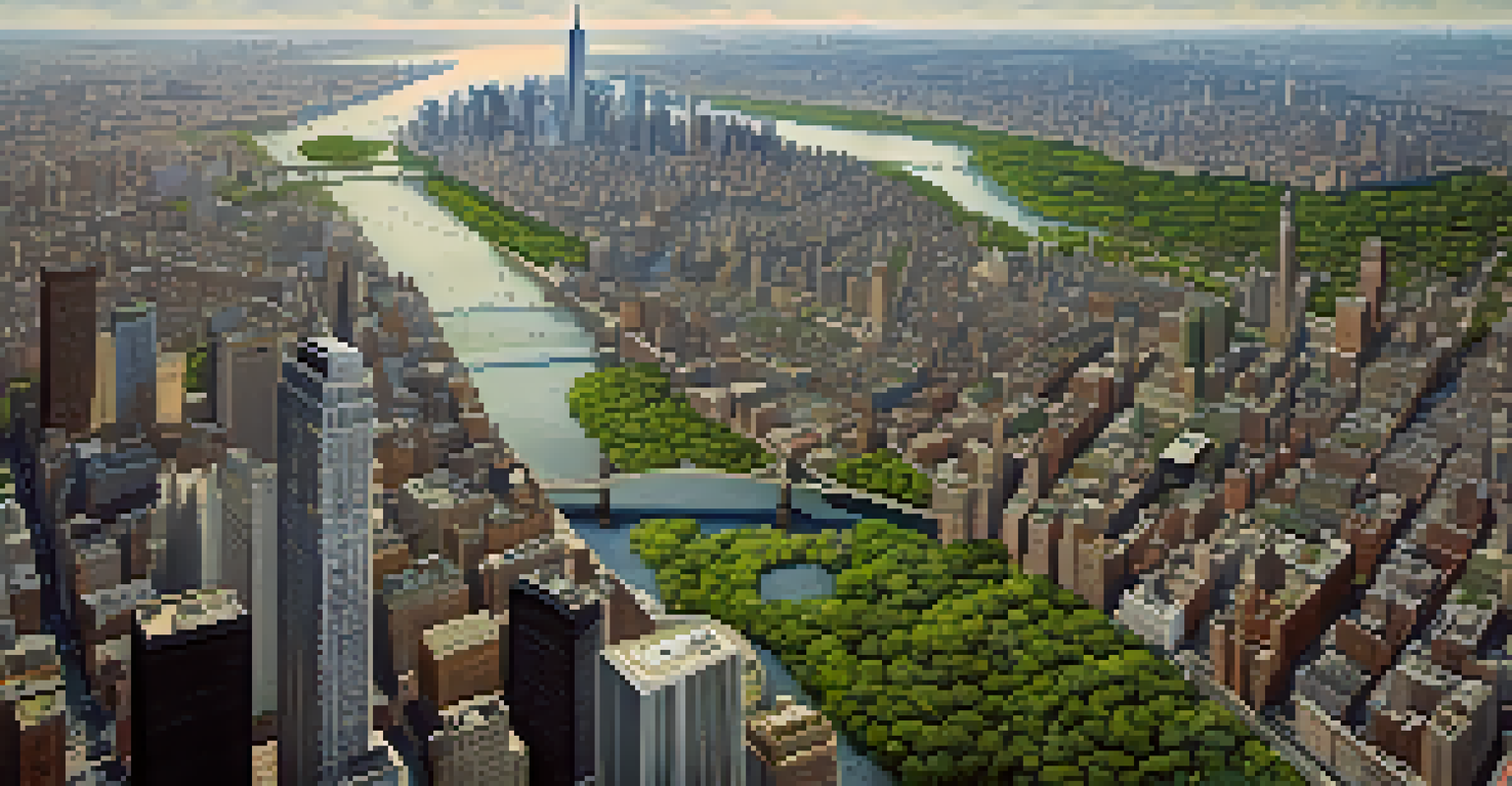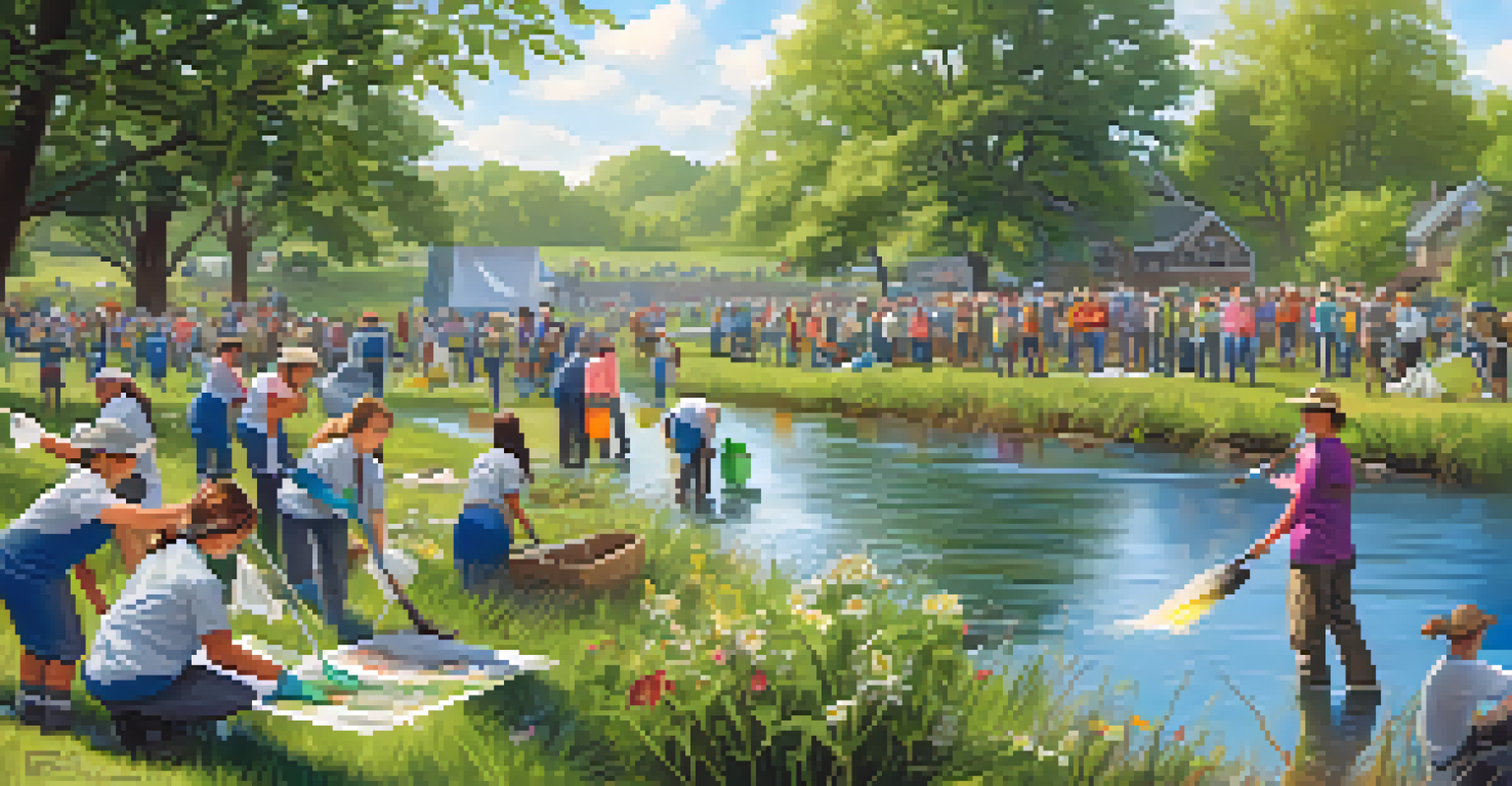The Importance of Watersheds for NYC's Water Supply

Understanding Watersheds: The Basics
A watershed is an area of land where all the water drains into a common body, like a river or lake. For New York City, these natural systems are vital, as they collect and direct rainwater and snowmelt. This collected water is essential for maintaining the city's water supply, which serves millions of residents and visitors.
Water is the driving force of all nature.
Watersheds act like giant sponges, soaking up precipitation and filtering it as it moves through the soil. This process helps to cleanse the water before it enters streams and rivers, ultimately reaching the reservoirs that supply NYC. Understanding this concept is key to appreciating their importance.
In essence, watersheds are the unsung heroes of NYC's water supply, working behind the scenes to ensure that the water we rely on is both abundant and clean.
The Role of NYC's Watersheds in Water Supply
New York City's water supply is primarily sourced from a network of reservoirs fed by several key watersheds. These include the Croton, Delaware, and Catskill watersheds, each contributing to the city's daily water needs. Together, they provide over a billion gallons of water every day, ensuring that both households and businesses have what they need.

The watersheds collect water from various sources, including rainfall and snowmelt, which then flows into the reservoirs. This natural collection process is essential for maintaining a steady supply of high-quality water. Without these watersheds, the city would face significant challenges in meeting its water demands.
Watersheds: NYC's Water Guardians
Watersheds are essential for collecting and filtering water, ensuring a clean and reliable supply for New York City.
Thus, NYC's watersheds are not just geographical features; they are critical components of the city's infrastructure that directly impact public health and quality of life.
How Watersheds Filter and Purify Water
One of the most remarkable aspects of watersheds is their natural filtration system. As water travels through the soil and rock, it is filtered of impurities, helping to ensure that the water reaching the reservoirs is clean. This process is often more effective than many man-made filtration systems.
We won't have a society if we destroy the environment.
For example, in the Catskill watershed, the diverse plant life and soil types work together to purify the water. The roots of plants absorb pollutants, while the soil traps sediments, creating a natural barrier against contaminants. This natural filtration is crucial for maintaining the high quality of NYC's drinking water.
In a way, watersheds act like nature's water treatment plants, providing a safe and reliable source of water without the need for extensive chemical treatments.
The Impact of Urbanization on Watersheds
As NYC has grown, urbanization has significantly impacted its watersheds. Buildings, roads, and infrastructure can disrupt the natural flow of water, leading to increased runoff and potential pollution. This urban sprawl can overwhelm natural systems, making it harder for watersheds to function effectively.
For instance, when rain falls on concrete surfaces, it quickly runs off into storm drains, carrying pollutants with it. This runoff can eventually make its way into the reservoirs, threatening water quality. Therefore, managing urban development is crucial for protecting these vital water sources.
Urbanization Threatens Water Quality
The growth of urban infrastructure disrupts natural water flow, increasing runoff and pollution risks for NYC's watersheds.
Understanding the balance between urbanization and watershed health is essential for ensuring that NYC continues to have access to clean water.
Conservation Efforts for NYC's Watersheds
Conserving watersheds is vital for maintaining the quality and quantity of NYC's water supply. Various organizations and local governments are actively involved in preservation efforts, focusing on sustainable land use practices. These initiatives aim to protect the natural environment while accommodating urban growth.
For example, initiatives like reforestation and the restoration of wetlands can help improve water quality and enhance the watershed's ability to filter water. Community engagement is also crucial, as local residents can play a part in protecting these resources by participating in clean-up events and spreading awareness.
By investing in conservation, NYC can ensure that its watersheds continue to thrive and supply the clean water that residents rely on.
The Connection Between Watersheds and Climate Change
Climate change poses significant challenges to the health of watersheds, affecting water availability and quality. Increased rainfall and extreme weather events can lead to flooding, which may overwhelm natural filtration systems and introduce pollutants into the water supply. This makes it essential to monitor and adapt management strategies.
Moreover, changing climate patterns can impact the seasonal flow of water into reservoirs. As temperatures rise, snowmelt may occur earlier, altering the timing and amount of water available. Understanding these changes is crucial for ensuring a reliable water supply in the future.
Community Action for Conservation
Active community involvement is crucial for the protection and preservation of NYC's watersheds, fostering environmental stewardship.
Addressing the effects of climate change on watersheds requires a proactive approach, incorporating innovative solutions to protect these vital resources.
Community Involvement in Watershed Protection
Community involvement is essential for the protection and preservation of NYC's watersheds. Local residents can contribute to the effort by participating in educational programs, volunteering for clean-up events, and advocating for sustainable practices. Engaging the community fosters a sense of stewardship and responsibility towards these natural resources.
For instance, neighborhood organizations often host workshops to educate citizens about the importance of watersheds. These programs emphasize how individual actions, like reducing plastic use or maintaining gardens, can positively impact water quality. When people understand their role, they are more likely to take action.

Ultimately, protecting NYC's watersheds is a shared responsibility that requires collective action from every member of the community.